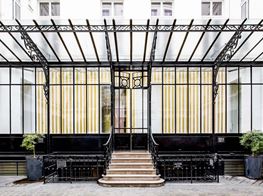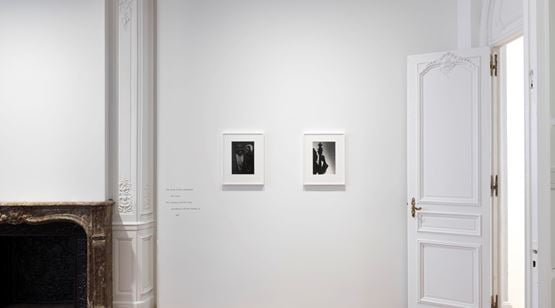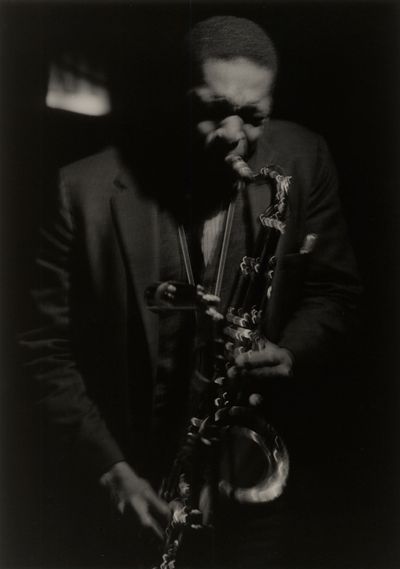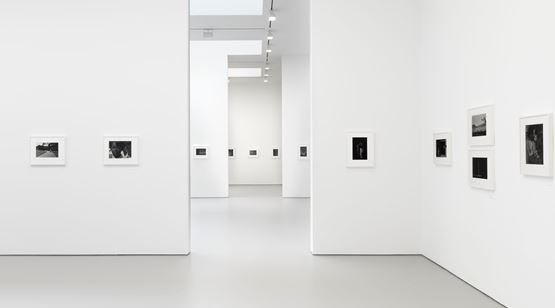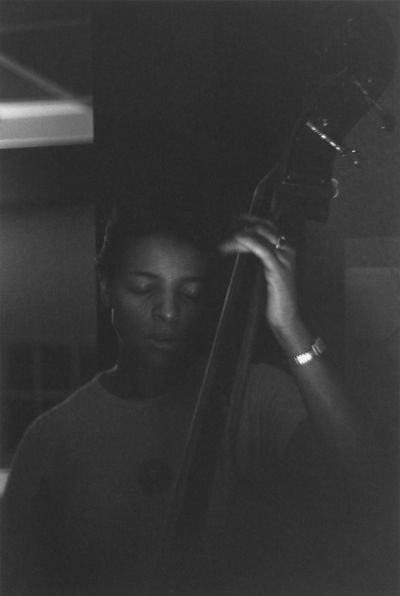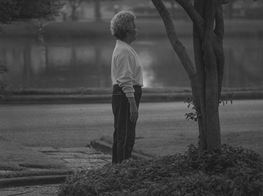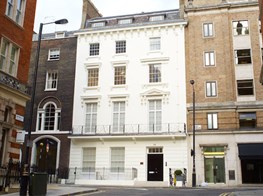Roy DeCarava in New York: A Jazz Photographer in Subject and Technique
Harlem-born photographer Roy DeCarava, a jazz artist both in subject and technique, is the focus of two concurrent exhibitions at David Zwirner's New York spaces, the gallery's first showing of DeCarava's work since announcing exclusive representation of his estate.
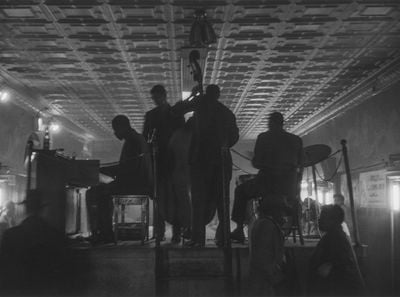
Roy DeCarava, Oliver Beener Group #4 (1956). © 2019 Estate of Roy DeCarava. All rights reserved. Courtesy David Zwirner.
Light Break and the sound i saw (5 September–26 October 2019), are concurrent exhibitions of Roy DeCarava's work, curated by art historian Sherry Turner DeCarava. They might be separated by David Zwirner's New York locations, but the shows, (the first presentation of the photographer's work since the gallery announced exclusive representation of his estate in 2018), are connected by an intrinsic understanding of DeCarava as a jazz artist in subject and technique.
To call DeCarava a jazz photographer is not simply to refer to one of the artist's many subjects. Not only did the Harlem-born photographer capture intimate visions of the legends of jazz music and the American context from which they arose, but the very essence of his work reflects the underlying elements of jazz. The lifelong New Yorker's 35mm camera was his instrument, with which he played visual tunes that artistically expressed the pathos of life for African Americans in New York City and elsewhere.
At the gallery's 34 East 69th Street space, the sound i saw explores the photographer's honest and intimate glimpses into the New York jazz scene. (The title refers to a photographic series of images created between the mid-1940s and 1960 that were later compiled into an artist book.) Born in 1919 amidst the cultural explosion of the Harlem Renaissance, DeCarava was surrounded by the African-American literature and arts flourishing in that period. In 1955, he co-published a book of photos and words, The Sweet Flypaper of Life, in collaboration with the poet Langston Hughes—one of the central literary figures of this new cultural wave.
DeCarava was especially taken with jazz. It was a part of his life in Harlem, where venues such as the Cotton Club, Lenox Lounge, and Apollo Theatre, saw the likes of Cab Calloway, Duke Ellington, Louis Armstrong, Billie Holiday, and Ella Fitzgerald, first make their mark.
Turning his lens to music in the mid-to-late 1950s amidst a broader practice of capturing dignified, humane, artistic photographs of life in Harlem, DeCarava discretely photographed jazz musicians mid-set and offstage in clubs, recording studios, and private homes. Through this and his professional magazine work and album cover commissions, DeCarava created enduring images of jazz giants including Ornette Coleman, John Coltrane, Miles Davis, Duke Ellington, Louis Armstrong, and Billie Holiday.
DeCarava took a particular interest in Coltrane in the early 1960s, attending his performances throughout the northeast whenever possible and producing several photographs of the increasingly famous saxophonist. MoMA curator Peter Galassi suggests this to be the result of the photographer's regret at not photographing the legendary Charlie Parker before his passing—hoping to document the work of his heir apparent as he enthralled an audience with his music.
What is evident in his portraits is that DeCarava photographed jazz as it was played, rather than the stardom of its players. Coltrane #24 (1961), just like Edna Smith, bassist (1950), shows the musician at one with their instrument, caught in an intense blur of the moment. DeCarava would capture such unguarded moments off-stage, too. John Coltrane and Ben Webster, New York (1960) depicts an emotionally charged and approving embrace of two legends from different eras.
Improvisation was key to DeCarava's work; he did not pose or direct his subjects. 'I respect what I'm looking at', he told Ivor Miller in 1988; 'I do not intrude. I stay back, and I wait until something happens. And then I take my picture, and then I wait again.' To make Man Coming Up Subway Stairs (1952), for example, the artist waited patiently for his subject to pass by, fumbling to change the film at the last minute before he missed his opportunity. His lens saw no difference between workers and jazz legends—they were human beings whose emotional experiences he sought to artistically convey. 'I don't think of musicians as musicians but as people—and as workers', he once said.
DeCarava's photographic practice reflects the principal tenets of jazz music: rejecting restrictive European formality in favour of improvisation, rich tonality, and unadulterated feeling. Just as jazz broke free of the strict rules and order of European music, sheet music and rigid orchestral compositions having no place in a Harlem jazz joint, DeCarava's approach to photography cast loose the norms of preparation, clarity, and stark black-and-white contrasts maintained even by other Harlem photographers, such as the portraiture of James Van Der Zee and documentary imagery of Gordon Parks. DeCarava in fact took issue with Parks for his conciliatory approach to his employer, Life magazine's, discriminatory practices.
Averse to flash photography, which he felt impacted the visual essence of what he saw, DeCarava's attitude to lighting was: 'whatever's there, I use it.' A jazz club, after all, was a dark place; to be well lit made no sense. Conveying these characteristics in the darkroom printing process, he produced images that demonstrate the difference between documentary photography and art; that is, the difference between taking a photograph and making one.— [O]


